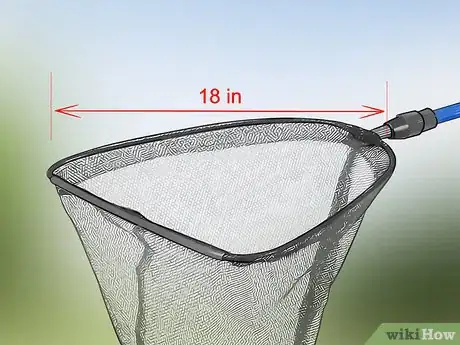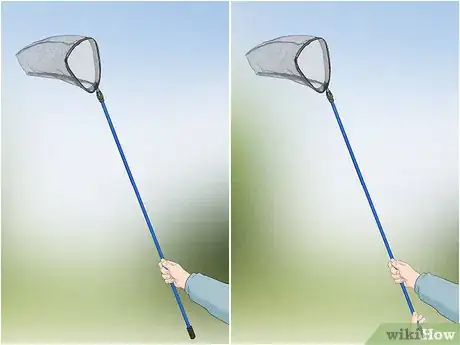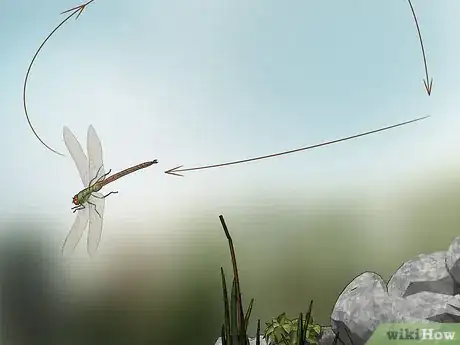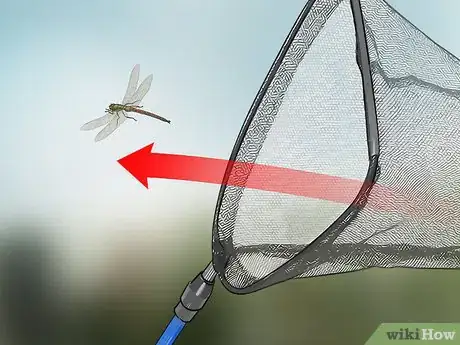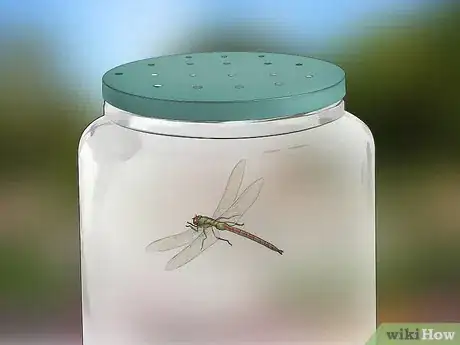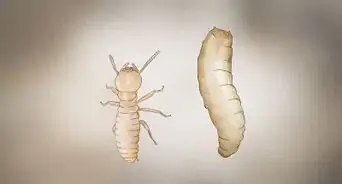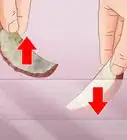X
This article was co-authored by wikiHow Staff. Our trained team of editors and researchers validate articles for accuracy and comprehensiveness. wikiHow's Content Management Team carefully monitors the work from our editorial staff to ensure that each article is backed by trusted research and meets our high quality standards.
This article has been viewed 26,593 times.
Learn more...
Dragonflies are beautiful creatures that are fun to look at. They’re also not too hard to catch! These swift insects like to hover, dart, and change directions quickly, so it may take a few tries to catch one. You can improve your chances of catching a dragonfly by choosing the right equipment and following the proper technique.
Steps
Method 1
Method 1 of 2:
Creating Optimal Conditions
-
1Use a long-handled aerial net with a wide opening. Select an aerial net that is 18 inches (46 cm) in diameter or larger. Look for one with a nice long handle. If possible, choose a dark-colored net over a light one.[1]
- Darker nets are more difficult for dragonflies to see, making the net more difficult to avoid.
- Aerial nets (also called butterfly nets) can be purchased at most sporting goods stores or online.
-
2Practice swinging with 1 or both hands. Before you head out into the field, try to get a feel for your net. Try holding the net with both hands (like a baseball bat) and swinging it. Try holding the net in just your dominant hand. See which way feels more comfortable for you.[2]
- A 2-handed swing can give you more power, which may make it easier to catch dragonflies.
Advertisement -
3Visit a lake, pond, or river. Dragonflies can be found on every continent except Antarctica. These insects enjoy being near water. Some varieties of dragonflies prefer moving water, while others are drawn to standing water. Visit a place where there is water, preferably where you have seen dragonflies in the past.[3]
-
4Position yourself in a concealed location. Locate your body so that you are obscured by tall grasses, trees, or other natural features. Remain still and keep your net as inconspicuous as possible. Try holding it behind your back or next to your leg, so that any dragonflies do not notice it.[4]
- Try to find a comfortable position. This can help you to stay still.
-
5Observe the dragonflies. Dragonflies will often fly in repeating patterns and even land on the same natural features over and over. Spend some time watching them fly and try to get a sense of their flight patterns.[5]
Advertisement
Method 2
Method 2 of 2:
Capturing a Dragonfly in Your Net
-
1Move slowly and deliberately. Alter your position so that you can swing your net into the cycle of a dragonfly’s flight pattern. Move smoothly and carefully to avoid disturbing the dragonflies. Continue to keep your net concealed for as long as possible. (They can get spooked if they see a net.)[6]
-
2Swing from behind. If a dragonfly sees a net approaching, they are likely to change direction. To avoid this, swing at dragonflies from the rear. This means you will be moving your net in the same direction they are flying.[7]
- It will likely take several tries to capture a dragonfly. Just try to have fun with the process!
-
3Transfer your dragonfly into a glass jar. Use your hand to gather the net above where the dragonfly was collected. Place the gathered section above a wide-mouthed glass jar. Turn the net inside out to deposit the dragonfly in the jar, and replace the lid.[8]
- Be sure to poke a few small holes in the lid ahead of time.
Advertisement
Community Q&A
-
QuestionWhat if the dragonfly bit my little sister's finger?
 CaticecremeCommunity AnswerDragonflies bite when they feel threatened, but they rarely break the skin, so she should be fine.
CaticecremeCommunity AnswerDragonflies bite when they feel threatened, but they rarely break the skin, so she should be fine. -
QuestionDoes the jar need to be glass?
 Community AnswerNo. You just want it to be big enough for the Dragonfly to be comfortable until you let it go.
Community AnswerNo. You just want it to be big enough for the Dragonfly to be comfortable until you let it go. -
QuestionHow many colors do dragonflies come in?
 Community AnswerYellow, orange, pink, brown, green and purple are the basic colors for dragonflies. There may be variations in between these colors too. Check out some images of dragonflies online.
Community AnswerYellow, orange, pink, brown, green and purple are the basic colors for dragonflies. There may be variations in between these colors too. Check out some images of dragonflies online.
Advertisement
References
- ↑ http://dragonflywebsite.com/articles/collecting/morse2.html#_1_13
- ↑ https://thedragonflywoman.com/2012/05/14/on-catching-dragonflies-and-softballs/
- ↑ http://www.biokids.umich.edu/critters/Anisoptera/
- ↑ http://dragonflywebsite.com/articles/collecting/morse2.html#_1_13
- ↑ http://dragonflywebsite.com/articles/collecting/morse2.html#_1_13
- ↑ https://thedragonflywoman.com/2012/05/14/on-catching-dragonflies-and-softballs/
- ↑ http://dragonflywebsite.com/articles/collecting/morse2.html#_1_13
- ↑ https://www.sciencenewsforstudents.org/article/catch-dragonfly
About This Article
Advertisement
